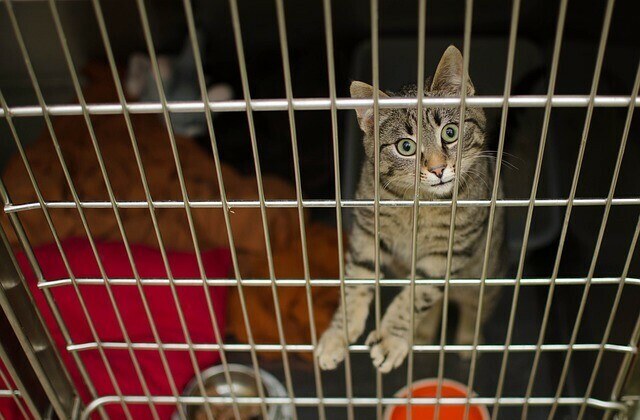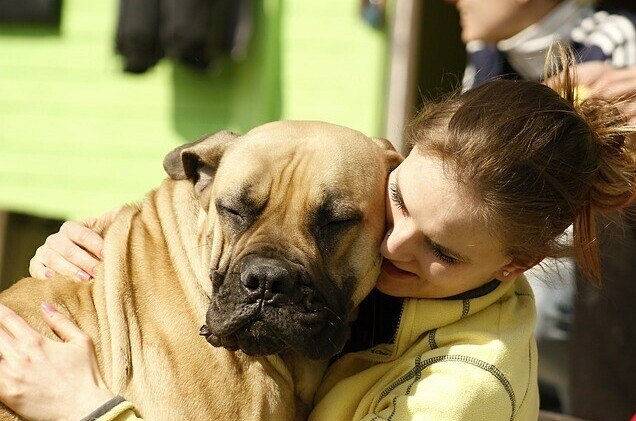Are you considering adopting a pet rescue? There are a few important things you should be aware of before adopting one. We’ll walk you through the things to think about in this guide. We can help you with everything from understanding the adoption procedure to determining your level of preparation and selecting the ideal companion for your way of life.
So, whether you’re a first-time pet owner or looking to expand your fur family, let’s dive in and make sure you’re fully prepared for this rewarding journey.

Understanding Adopting a Pet Rescue Process
Pet rescue is a noble decision that can transform both your life and the life of a needy animal. However, it’s important to understand the process, including the inner workings of rescue groups and the differences between adopting and buying from breeders.
How Adopting a Pet Rescue Works
Pet rescue organizations rescue animals from cruelty, neglect, or abandonment, placing them in foster homes or shelters. They raise awareness through adoption events, animal content, and partnerships, prioritizing spaying and neutering.
Remember, while you are supporting a worthy cause, you are bringing home a furry buddy.
Types of Pet Rescue Organizations
Pet rescue organizations, including city, government and nonprofit shelters, foster, and retirement communities, take in animals due to abuse, strays, and surrendered pets, offering services like adoption and licensing.
Nonprofit or private shelters are run independently, relying on volunteers and donations, with specific goals like animal rescue or addressing unique needs.
Foster-based organizations provide individualized care for each animal, while retirement communities provide permanent care for animals with age, health, or behavioural disorders.
Importance of Adoption vs. Buying
Adoption, often from a rescue or shelter, offers several benefits over purchasing from a breeder or pet shop when adding a new pet to your family. A few of these benefits are:
- Adoption, above all, saves lives: Adopting a pet rescue gives them a second chance at loving homes, helps prevent pet overpopulation, and supports rescue groups’ vital work.
- Less expensive. Adopting can be cheaper than buying from a breeder due to the coverage of vaccinations, spaying/neutering, and initial medical costs.
- Providing a home. When you adopt, you provide a stable and loving environment for abandoned or surrendered shelter animals, offering them a loving home and a sense of belonging.
- Understanding of pet’s temperament. Adopting from a shelter or rescue group allows for a better understanding of the animal’s temperament and past, as behaviour assessments are conducted to assess its suitability for various households.
Assessing Your Readiness for Adoption
Assessing readiness for adoption is critical for pet ownership. This includes lifestyle, dedication, and budgeting for expenses.
Evaluating Your Lifestyle and Commitment
Before adopting a pet rescue, assess your lifestyle, commitment level, living conditions, future goals, and ability to provide long-term pet care. Adjust your schedule to suit your pet’s needs. Ensure you are prepared for the lifetime commitment to animal care.
Budgeting for Adopting a Pet Rescue
Setting up a budget for a pet is an essential part of getting ready to welcome a new family member into your house. Different costs associated with owning a pet include the following.
- Starting costs: Includes adoption fees, spaying or neutering, and any necessary vaccinations or medical treatments.
- Ongoing expenses: Food costs are high, especially for larger animals or those with specific dietary needs, such as premium food, treats, supplements, and prescription drugs.
- Veterinary care: Veterinarian care involves routine examinations, vaccinations, preventative measures like flea and tick control, and sudden emergencies.
- Grooming needs: Professional grooming for long-haired breeds or dogs with specific needs can involve the use of products like brushes, shampoos, and nail trimmers.
- Additional costs: Consider pet-related expenses like toys, bedding, litter, and insurance in your budget, as they can accumulate over time.
Considering Family and Home Environment
Adopting a pet rescue requires several important factors – family dynamics, determining needs and preferences, and discussing roles and expectations to ensure everyone agrees on pet care.
- Type of pet: Choose the ideal pet for your family’s lifestyle, considering size, age, and energy level. Seniors prefer older, calmer pets, while families with children prefer well-socialized, tolerant ones.
- Existing pets: Gradually introduce them to current pets under controlled conditions to ensure compatibility and minimize conflicts.
- Living space: Consider factors like apartment size, safe yard, and potential house risks to ensure the pet’s safety and well-being.
- Neighbourhood and resources: Consider nearby resources like parks, trails, and pet-friendly businesses like groomers, vets, and supply stores for your pet’s well-being.
Choosing the Right Pet Rescue for Your Lifestyle
This section focuses on matching your personality with pet qualities, understanding different species’ unique demands, and what to consider when adopting a senior or special needs pet.
Matching Your Personality with Pet Traits
Selecting the right pet depends on your personality and lifestyle. For adventurous individuals, Labrador Retrievers or Border Collies are ideal, while quiet cats or low-maintenance pets like hamsters or fish are suitable for relaxed lifestyles.
Choose a pet based on your living arrangement, style, temperament, trainability, and compatibility with family members and pets. Consider factors such as independence or love. Think about past experiences with other pets.
Matching a pet’s characteristics with your personality can help you make an informed choice for a companion that integrates well into your life.
Considerations When Selecting a Pet Rescue
Adopting the right pet species is crucial due to their unique traits, care requirements, and lifestyle suitability. Important things to think about when choosing the species that suits you the best are:
- Size: Larger animals like dogs need more space for exercise and roaming, while smaller pets like cats or rodents can thrive in smaller living spaces.
- Lifespan: Consider how long you’re willing and able to commit to caring for a pet, as well as the emotional impact of potentially outliving your furry friend.
- Maintenance: Dogs require grooming, exercise, and training, while cats are independent but still need attention. Smaller pets like birds, fish, or mammals have specific dietary and habitat needs.
- Activity Level: Active breeds like Border Collies and Bengal cats demand more mental and physical stimulation, while laid-back breeds like Bulldogs and Ragdoll cats are better suited for less active households.
- Compatibility: Consider the species’ compatibility with your family’s lifestyle, allergies, temperament, and compatibility with other pets to create a harmonious living environment.
Special Considerations for Adopting Senior or Special Needs Pets
Adopting an elderly or special needs pet rescue can provide fulfilling companionship, even if they require more care and attention. Here are some special considerations to keep in mind when adopting a senior or special needs pet:
- Medical Needs: Senior pets and those with special needs may require ongoing medical care, including medications, dietary supplements, or specialized treatments. Be prepared to budget for veterinary expenses and commit to providing the necessary care to keep your pet healthy and comfortable.
- Lifestyle Adjustments: Adopting a pet rescue may require lifestyle changes, such as adjusting daily schedules and living spaces, or providing additional support.
- Emotional Support: Senior and special needs pets require extra love, care, and patience as they adjust to new homes.
- Adoption Resources: Adopt elderly or special needs animals through adoption agencies or rescue groups, which provide additional resources and assistance in finding the perfect match and managing special pet care.
- Lifelong Commitment: Caring for elderly or special needs pets is a lifetime commitment, requiring readiness for changes but rewarding due to the love and company they bring.
Preparing for Your New Family Member
Excitement is building as you prepare to welcome a new furry family member into your home. Get ready for your new pet by preparing your house, gathering necessary materials, and being aware of your pet’s needs.
Setting Up Your Home for Success
Providing a warm and secure home for your new pet is crucial to a seamless adjustment and a fulfilling life together. To help you set up your home for success, consider the following:
- Pet-proofing: Before your new pet arrives, pet-proof your house by removing any potentially harmful items, such as small objects, toxic plants, and common household chemicals.
- Designated space: Create a secure, peaceful area in your home for your pet, away from busy streets and noise, with a bed or crate, to alleviate their anxiety.
- Supplies: Gather daily pet necessities like food, water, bed, toys, and grooming products in one place to facilitate their transition and make their transition faster.
- Identification: Ensure your pet is properly identified with a microchip or collar with contact information to ensure a safe return home in case of loss or mishap.
- Training aids: Investing in training tools like puppy pads, crates, or baby gates can aid in housebreaking and behaviour training for young or untrained pets, promoting consistent training and good reinforcement.
Gathering Essential Supplies for Your Pet Rescue
For a seamless transfer and the welfare of your new pet, make sure you have all the items you’ll need before they arrive. Here’s a checklist of essential supplies to gather:
- Food and water bowls: Choose hygienic bowls for your pet, such as ceramic or stainless steel, as they are safe and don’t harbour bacteria.
- Bed or crate: Create a secure and comfortable sleeping area for your pet, whether it’s a plush bed for dogs or a cozy crate for small animals.
- Toys: Offer a variety of toys to keep your pet entertained and mentally stimulated, including interactive toys for play and exercise, and chew toys for teething puppies or small animals.
- Grooming supplies: Gather essential grooming supplies like brushes, combs, nail trimmers, and shampoo for your pet’s regular grooming to maintain a healthy coat and prevent mats and tangles.
- Litter box and litter: If you’re adopting a cat, choose a large, comfortable litter box big enough for your cat to turn around in, and appropriate litter for their preferences and household needs.
- Leash and collar or harness: Ensure your dog has a comfortable collar, harness, and leash for walks and outings, and consider using a collar with ID tags for added safety.
- Food and treats: Choose premium pet food that is suitable for your pet’s size, age, and nutritional requirements. Treats are useful for both positive reinforcement and training.
- Cleaning supplies: Keep your pet’s environment clean and hygienic by stocking up on pet-safe cleaning products, stain and odour removers, and poop bags for waste cleanup.
Understanding Behavioral and Health Needs
Understanding your new pet’s behavioural and health needs is important for their well-being and your relationship with them. Here are some important things to think about:
- Behavioural needs: Learn your pet’s temperament, behavioural patterns, and breed traits to ensure their happiness and well-being through proper enrichment, training, and socializing.
- Training and socialization: Invest in training your pet for etiquette, obedience, and social skills, using patience, consistency, and positive reinforcement. Seek professional advice or enroll in obedience training if needed.
- Exercise and mental stimulation: Regular exercise and mental stimulation are essential for maintaining your pet’s physical and mental well-being, including enrichment toys, puzzles, and interactive feeds for all types of pets.
- Veterinary care: Soon after adopting a pet rescue, schedule a veterinarian examination to ensure their health and preventive treatment, fostering a strong relationship with the veterinarian throughout your pet’s life.
- Nutrition: Provide a well-balanced pet diet, consulting your veterinarian for optimal results, as incorrect or excessive feeding can lead to health issues.
- Routine care: Establish a grooming, dental, and parasite prevention program for your pet’s comfort and health, preventing issues like matting, skin issues, and overgrown nails.
Navigating the Adoption Process
This section guides the adoption process, from finding trustworthy rescue groups to connecting with adoptive families, ensuring a smooth and fulfilling experience for both pet lovers and first-time adopters.
Finding Reputable Rescue Organizations
Finding trustworthy rescue groups that put the welfare of their animals first is important when starting the process of adopting a pet rescue. The following procedures can assist you in locating trustworthy rescue groups:
- Research online: Explore local rescue groups online using social media, pet adoption websites, and review sites. Focus on companies with strong internet presence, active community involvement, and positive ratings.
- Visit local shelters: Visit local animal shelters and rescue organizations to learn about their facilities, personnel, and adoptable animals, as well as their adoption procedures, rules, and care.
- Ask for recommendations: Ask friends, neighbours, and pet owners for referrals to local rescue groups. Personal recommendations can provide valuable information and help locate companies with successful adoption records.
- Check accreditation: Seek rescue groups accredited by reputable animal welfare organizations like the Humane Society International or ASPCA, as their accreditation demonstrates compliance with ethical standards and care standards.
- Review adoption policies: Ensure rescue groups align with your values and interests by reviewing their adoption rules, prioritizing animal welfare, and conducting thorough screenings to ensure a suitable match between adopters and pets.
Meeting and Interacting with Potential Pets
An important part of the adoption process is getting to meet and interact with possible pets in person so you can judge their temperament, personality, and fit for your way of life. Here’s how to make the most of this important step:
- Schedule a visit: Visit adoptable animals by contacting the rescue group and observing their behaviour, body language, and responses to you and your family.
- Ask questions: Meet with rescue group volunteers to understand the pet’s temperament, history, special needs, interactions, behaviour, and potential medical or behavioural issues.
- Observe interactions: Observe pet behaviour around other animals, people, and family members, assessing for signs of fear, hostility, or anxiety, as well as friendliness, interest, and sociability.
- Spend quality time: Observe and interact with each pet for extended periods, observing their energy level, interest, and reaction to touch and attention.
- Consider compatibility: Consider the pet’s temperament, energy, and personality to match your lifestyle, tastes, and family dynamics, and choose a pet that suits your home.
Understanding Adoption Fees and Paperwork Requirements
To ensure a seamless adoption procedure for you and your new pet, it is crucial to comprehend adoption fees and paperwork requirements. This is what you need to know:
- Adoption fees: Adoption fees are charged by rescue groups to cover costs of pet care, including immunizations, microchipping, spaying/neutering, and basic medical care, influenced by pet age, breed, and health.
- What’s included: Before adopting a pet rescue, ensure the adoption price includes additional benefits like a free initial veterinarian exam, a startup kit, or a trial period to ensure the pet’s suitability for your home.
- Paperwork requirements: Adoption involves filling out documentation like an application, contract, and other requirements, including adoption agreement terms, pet owner obligations, and adoption limitations.
- Screening process: Rescue organizations conduct screening procedures to ensure potential adopters are prepared to provide responsible homes for their dogs, including house visits, background checks, and reference checks.
- Adoption policies: Acquire knowledge of the rescue group’s adoption procedures, rules, return policy, adoption standards, and associated costs to make an informed decision.

Conclusion
In conclusion, getting a pet is a fulfilling experience that enhances your quality of life. It requires understanding the adoption process, considering your lifestyle, and choosing the right animal.
Be patient, loving, and committed to building a lasting relationship with your pet. Accept the adventure of adopting a pet rescue and enjoy the delights of pet parenthood.

We love to travel. For our trip to Mexico, we were able to save money by house sitting, which was something completely new to us. If this is something that interests you, then check out TrustedHousesitters or HouseSitMexico (be sure and use Code thetr6210d47b7cc90 for discount). We hope you visit often.